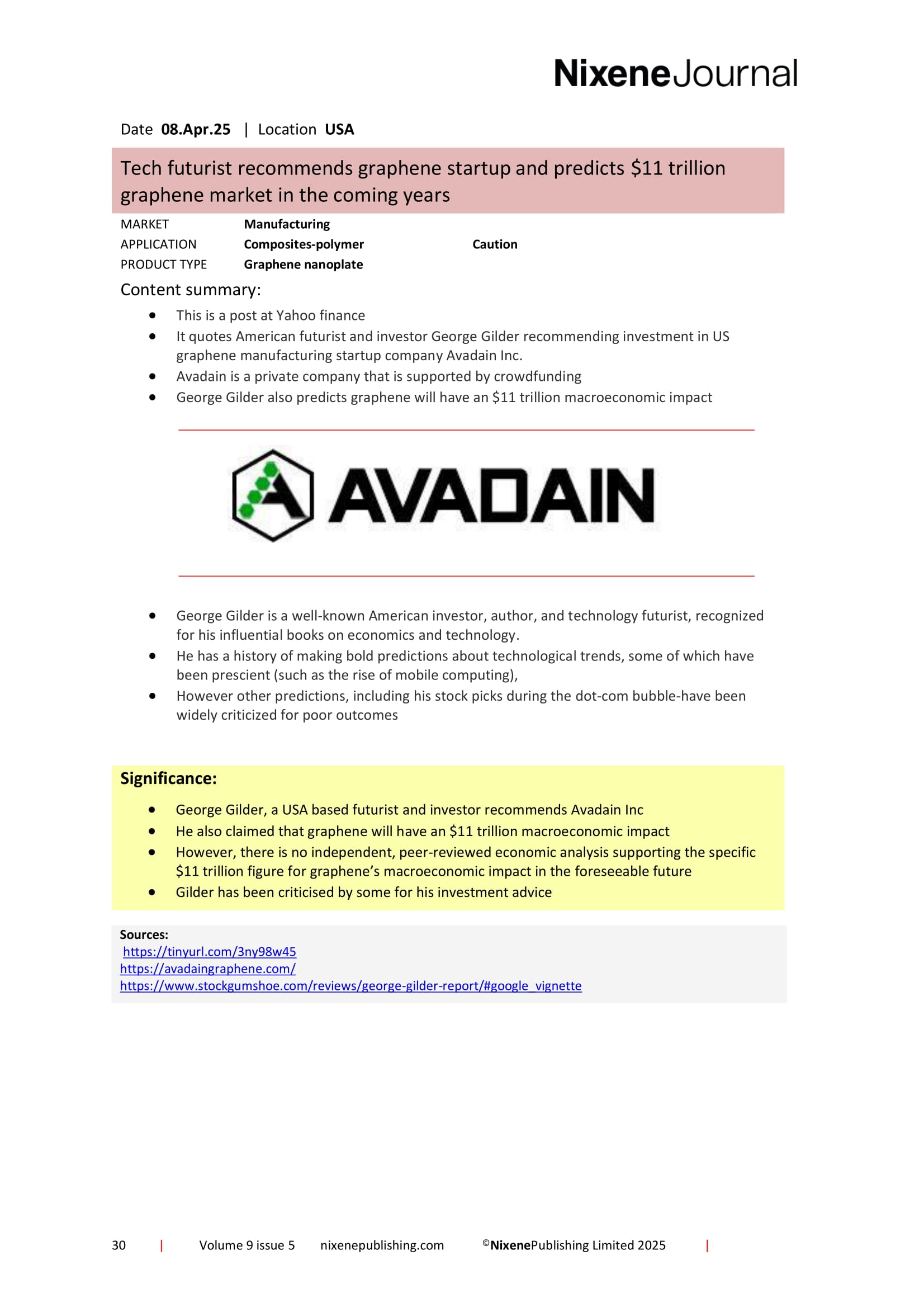Journals
This product is relevant to the following:
Material:
Other:
, ,Locations:
Markets:
Applications:
Product Types:
Technologies:
Related products
-
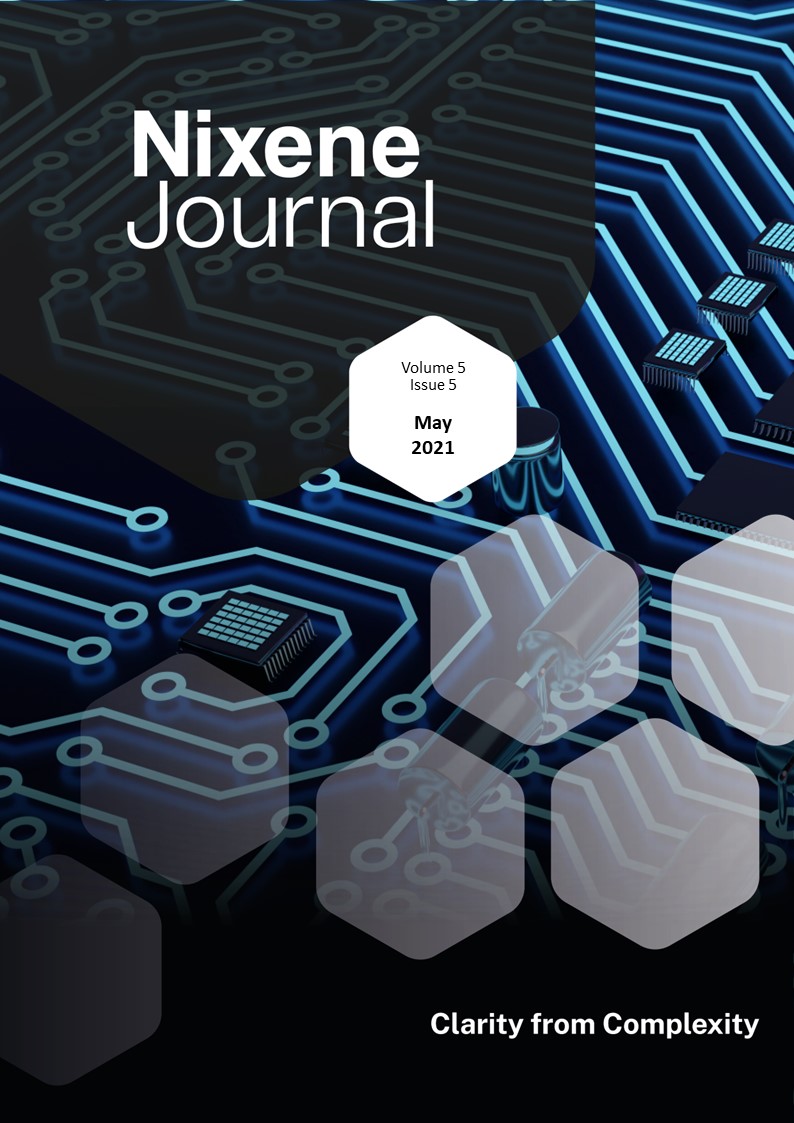
Vol 5 Issue 5
It is not every month that a new allotrope of carbon is announced. The last time this happened was back in 2019 when researchers in the UK and Switzerland made a ring of 18 atoms called cyclocarbon (Vol3 iss9 p.12). This month a joint team in Germany and Finland have made a flat sheet of carbon atoms with 4 6 and 8 rings. They call this new material a biphenylene network (BPN). This new material seems to be exciting the researchers because it exhibits metallic character. It also opens the door to explore other potential allotropes of carbon. Graphene-metal composites also make another appearance this month. Two Indian organisations have been working on aluminium-graphene composites (Al-G). Tirupati graphite says it has made an Al-G composite that has 95% the electrical conductivity of copper with the light weight of aluminium (although no has been presented yet). The Maharaja Agrasen University has published a peer reviewed paper showing that 1% graphene powder produced a 67% increase in the ultimate strength of the aluminium composite. A joint team in the Netherlands and Germany has made a Pirani pressure sensor from multilayer CVD graphene. It is not only 100 times smaller than the state-of-the-art sensors; it consumes a fraction of the power and is so sensitive it can detect different gas molecules. Aerospace and automotive applications abound. A new car company, Viritech, has announced it is building an electric supercar with a range of 800km and a top speed in excess of 300km/hr. The company has rejected batteries in favour of a hydrogen fuel cell to generate the electricity. The hydrogen storage tank is made from graphene enhanced carbon fibre and is an integral part of the chassis. Production is due to start in 2023. Graphene enhanced concrete made the headlines this month. British construction company Nationwide Engineering and the University of Manchester’s Graphene Engineering Innovation Centre (GEIC) have created graphene enhanced concrete for the whole floor of a new building in Amesbury, UK. As well as being a practical success in CO2 reduction the use of graphene has reduced the quantity of materials involved by 30% and potentially cut the costs between 10 and 20%. This will catch on. Adrian Nixon, 1st June 2021£45.00 View product -
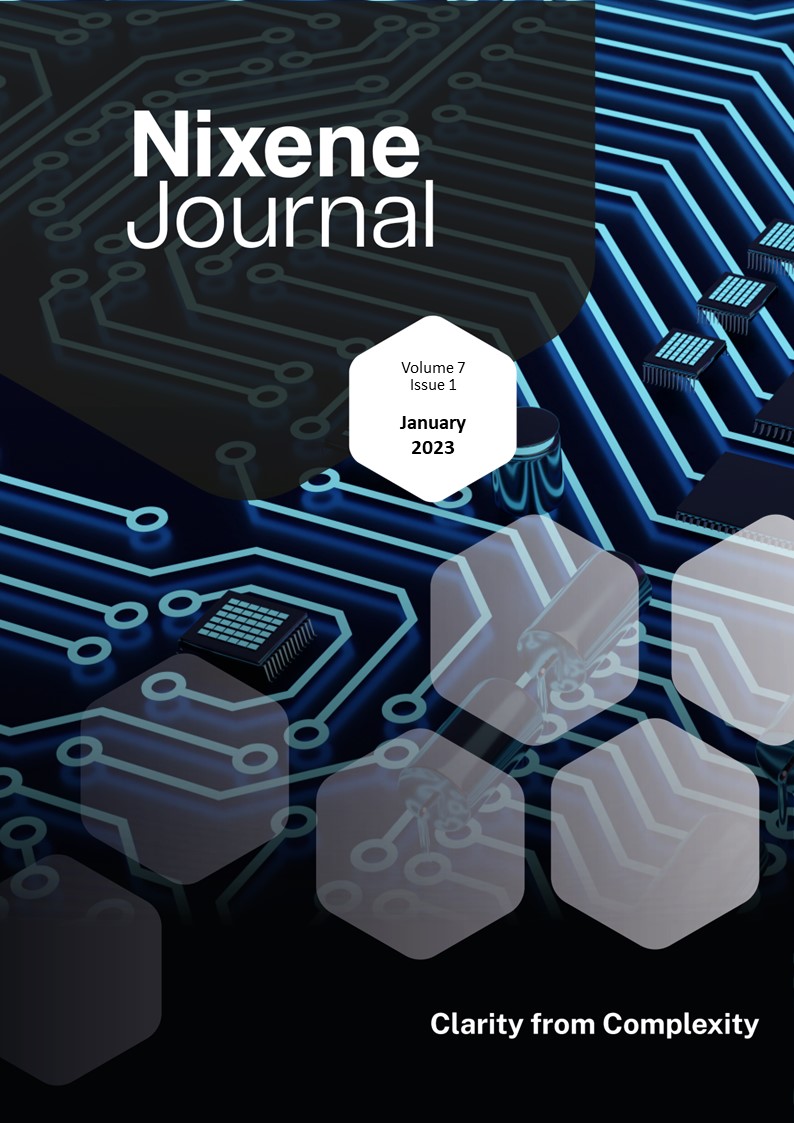
Vol 7 Issue 1
Batteries feature several times in this issue of the journal. Dear Reader, you will know that energy density is the key performance metric we watch. The higher the energy density (Wh/kg) the further you can travel on a battery charge. Current lithium-ion (Li-ion) batteries have an energy density around 260Wh/kg. We have highlighted the work of a company developing lithium-sulphur technology (Li-S) vol 5 iss 12 p.35. They have claimed energy densities over three times that of current Li-ion batteries using graphene enhanced cell designs. You will probably guess that we have been following this company and contacted them multiple times. We have yet to see data to back up these extraordinary claims. It was with interest that we found an online discussion between battery experts, the consensus view is that Li-S technology can create higher energy densities than Li-ion. However, this comes at a cost of reduced battery life. Perhaps this is the reason we have yet to see data backing up the claims for Li-S technology. Then NASA announced they have been working on a new graphene enhanced battery technology. The graphene is used as the structure for a sulphur/selenium cathode and is based on holey graphene that NASA developed in 2017. A solid-state electrolyte separates the anode from a lithium metal anode. The interim results are promising. They have achieved an energy density of 500Wh/kg. The battery seems to be safer too. It resists impact damage and has a maximum operating temperature of 150°C. NASA anticipates this solid-state battery will start to become available within three to five years. Elsewhere in this issue we report on developments as diverse as graphene enhanced condoms in India to graphene enhanced polymers launched on a SpaceX rocket bound for the moon. There is so much more in between these two very different applications, I encourage you to read on… Adrian Nixon 1st January 2023£45.00 View product -
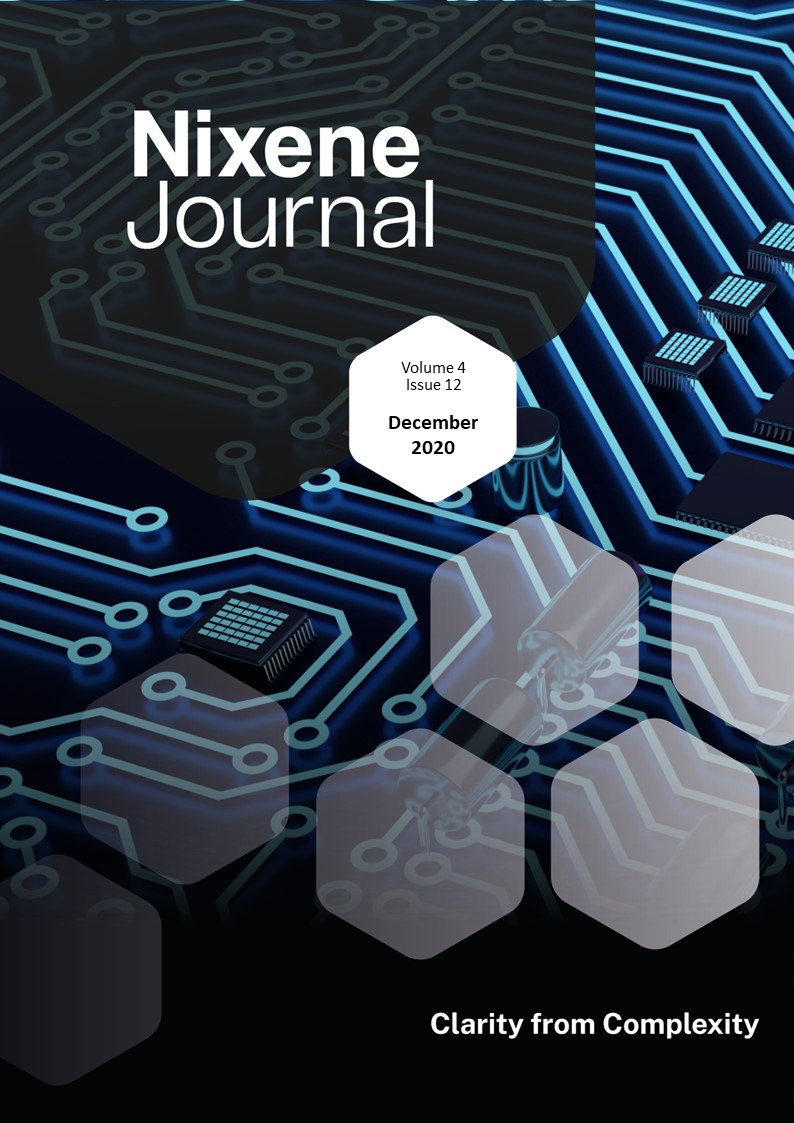
Vol 4 Issue 12
As fascinating as the technical developments are, it is the commercial side which needs highlighting in this summary this month. More evidence is mounting to support James Baker’s claim that graphene has reached a turning point and has overcome the hype of its early teens. We are starting to see noticeable movements in the five-year share price trends of graphene companies. Companies that have antiviral or battery applications are beneficiaries of renewed attention. I’ll draw your attention to the graphene companies share price section of this issue. There is a new graphene company, Sparc Technologies, launched on the Australian stock exchange. It has a deal to commercialise patents developed by the University of Adelaide and has attracted significant investor interest. Another Australian company GMG reported its series C investment round of AUD3million was oversubscribed. The company plans to float on the stock exchange next year. A new company called Toraphene has appeared making an eponymous product that is a graphene biopolymer that makes biodegradable packaging. It launched as a crowdfunded initiative and has raised nearly GBP700K already, double its ask. We have contacted the company and asked for more technical information about its products. Integrated Graphene Ltd, (IG) announced the completion of a GBP3.1 million round of investment in the business, IG is a UK Scottish-based tech company that manufactures a graphene foam that they call Gii. The company is targeting medical diagnostics and supercapacitors markets. Estonian supercapacitor company Skeleton is continuing its unstoppable rise. It announced it has raised EUR41.3 million ($48.5 million) in Series D financing This brings its total capital raised to over EUR93 million ($109 million) Lots of activity around graphene enhanced lithium-ion batteries for electric vehicles. As far as we can tell, this seems to be creating improvements in the life of the battery by maintaining the integrity of the electrodes. Improvements in charging time are also claimed. Tellingly, there is no evidence that graphene is improving the energy density of batteries. The rush to electric vehicles is creating a market pull for better batteries that the technology does not seem to be able to match. For now, if you want to travel further in your battery powered car, then you have to add more batteries. We finally discovered which tool is being used for the at-line Raman spectroscopy quality control for the production of graphene powders. First graphene has acquired the QT-Sampler made by BWTEK Metrohm. This allows the company to measure flake aspect ratio and number of layers of the graphene powders they produce. The data is used for statistical process control which means they have a sophisticated approach to making and characterising a consistent product. Adrian Nixon, 1st December 2020£45.00 View product -
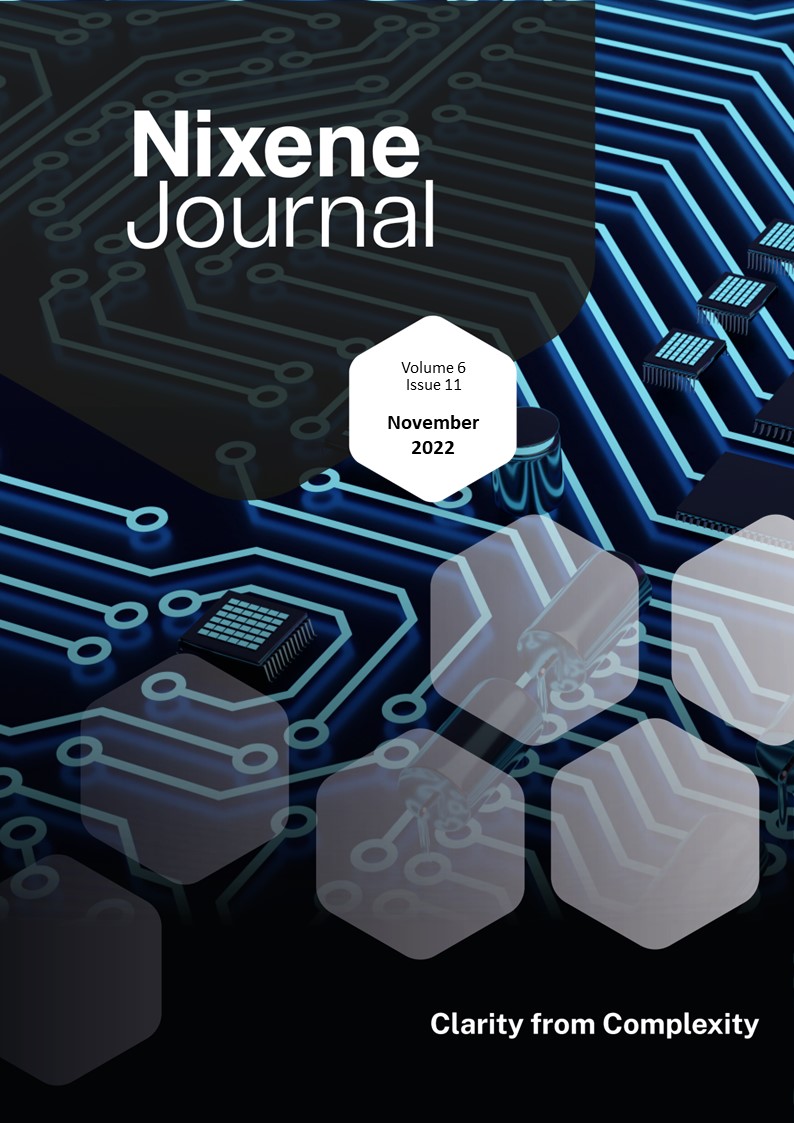
Vol 6 Issue 11
This month we performed our own analysis of the world-wide graphene research trends between 2004 and 2021. This examined the number of research papers produced by the academic community each year. We found that ‘peak graphene research’ occurred in 2018 with a maximum of over 300,000 scholarly articles produced in one year. That number has declined by about a third in the years leading up to 2021 and there are now around 100,000 articles produced by the global academic community each year. The trend charts in the special feature of this issue reveal what we found in more detail. It makes for fascinating reading and will give you an insight into how we curate each issue of this journal. The research we have highlighted this month includes work done by a team at Chongqing University, China who have discovered a way of improving the efficiency of the chemical vapour deposition (CVD) process for making graphene. By using a special catalyst, they can lower the furnace temperatures by 300°C. Other work by researchers at the University of Manchester, UK has found a potentially efficient way of splitting water into hydrogen gas using proton permeable graphene membranes. They can also measure the proton current moving across the graphene membrane. Understanding proton currents could help design better hydrogen fuel cells and even help design better ways of generating fuel for a future hydrogen economy. There are interesting developments on the industrial and commercial side this month. In Australia, the Graphene Manufacturing Group has done something with battery technology that we rarely see. They have made big improvements in energy density. This is a very hard thing to do with lithium-ion batteries. GMG has developed a new technology; graphene-aluminium-ion batteries and they are making continuous improvements, we are impressed. Another new technology caught our attention. First Graphene is helping develop a prototype module that can be retrofitted to natural gas boilers. The technology is graphene enabled, improves the efficiency by 20 to 30% and at the same time achieves 98-99% reduction in boiler emissions. This is at the prototype stage now. We wish the company well developing this technology. As usual dear reader, this is just the tip of the mountain, please explore the landscape we have curated for you this month by reading on… Adrian Nixon 1st November 2022£45.00 View product

